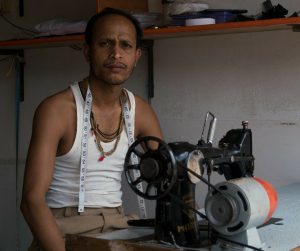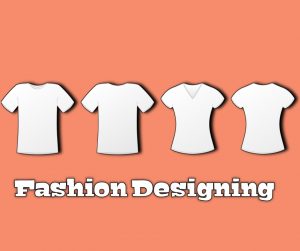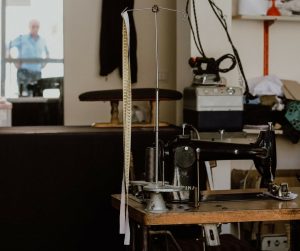Differences Between A Tailor and a Fashion Designer: When choosing classic designs or an outfit, we may mistake the work of a fashion designer for that of a tailor. They use the same sewing equipment after all, and the ultimate product is garments or dresses. The two, however, significantly differ in terms of everything from the conditions for their professions to the end outcome. It doesn’t always seem like this is the case.
While a fashion designer is an alpha and omega, the creator and the brain behind the very design the tailor copies from to sew for a customer, a tailor is the one who gets to take measurements of customers and then sew a pattern to fit with the customer’s measurements and design chosen from a book or magazine and nowadays, from the internet via Instagram or Facebook.

What if I told you that a tailor would only be able to repair damaged garments in the absence of a fashion designer? Not all tailors are fashion designers because, when you think about it, fashion designing is more like drawing the blueprint for a house and requires expert skills from thinking to sketching to drawing as well as numerous sleepless nights just to come up with a distinctive design that would stand out in the extremely competitive world of fashion. Let’s examine the distinction between a fashion designer and a tailor.
Recommended: How to become a professional model
Who is a tailor?
A tailor is someone who makes clothes from scratch and adds the finishing touches. They typically sew new outfits using patterns and ideas that are given to them, or they adjust ready-made clothing to better fit the clients. The tailors may work for the clothing manufacturers or as self-employed.

What Are The Job Responsibilities Of A Tailor?
The following are the typical duties performed by a tailor:
1. Measure the customers to ensure that the outfit fits them properly.
2. Cut the fabric using patterns and measurements.
3. Makes whatever adjustments that are required, and make marks on the clothing.
4. Open seams to allow for hemming or other necessary modifications.
5. Use a sewing machine or a needle and thread to sew an item of clothes.
6. Perform clothes fittings on clients to ascertain whether more alterations are required.
Also see: Advantages and Disadvantages of Being a Lawyer
While some of the tailors specialize in making men’s suits to order, there are others that only stitch clothes made of a specific kind of fabric. To produce new clothing, some tailors collaborate with fashion designers or clients. They receive orders for sewing a garment from the clients and assist them in choosing the fabric and colors that are ideal for that particular client.
A tailor brings diverse fashion ideas into reality while working for a fashion designer and is supervised by a head sewer. However, tailors also operate their businesses and are in charge of all managerial and administrative duties.
Recommended: Differences Between Goals and Objectives
Who is a fashion designer?
Fashion designers produce clothing for men, women, and children by researching fashion trends, sketching ideas, and choosing materials. They participate in and make contributions at every stage of the manufacturing of their designs. They produce countless millions of clothing items each year, which are bought by customers. Sportswear, outerwear, maternity wear, underwear, formal wear, eyeglasses, and footwear are some examples of these outfits. Some fashion designers also create hats, scarves, handbags, and belts as accessories.

As couturiers, ready-to-wear designers, or even fashion stylist who makes minor adjustments to already-existing designs, fashion designers can operate at various levels of the fashion industry. The newest technology is used by fashion designers to create better-personalized fits, such as body scanning, or seamless knitting, which enables the manufacture of apparel with just the touch of a button.

Also see: How to Make New Friends at School: 10 Effective Tips
What Are The Job Responsibilities Of A Fashion Designer?
Every step of creating an outfit is done by the fashion designer. The steps involved in designing an outfit range from conceptualizing a concept to the last stage of outfit manufacture.

1. Investigating fashion trends and forecasting upcoming trends. This informs them of the trends that will be popular throughout a specific season or in the coming months about styles, colors, and fabrics.
2. Go to trade events and textile manufacturers to obtain fabric samples and determine which textiles go well with which designs.
3. Constructs a basic design using storyboards, sketches, or by sewing pieces of fabric to a dummy.
4. Using computer-aided design, work on the initial design draft to create the first basic prototype.
5. The CAD allows designers to view garment designs on virtual models in a variety of colors and shapes.
6. Making a toile or preliminary working pattern out of inexpensive fabric. Modify, abandon, or accept the design that will be shown in the fashion show.
Recommended: Most Beautiful Cars In The World 2022 (With Pictures): Top 10
The large design studios employ stylists, tailors, and pattern makers to manufacture the prototypes and develop the master patterns. Conversely, fashion designers who work for small design firms typically do all of the technical and sewing chores themselves. Freelance fashion designers typically operate under a written contract. Usually, they have to change their schedule to accommodate deadlines and their clients’ schedules.
They must put in longer hours in confined places while also being under constant work pressure to meet the deadlines and the needs of the clients. Regardless of the path they choose, fashion designers need to maintain close contact with both their clients and the suppliers of the fabric producers. Most fashion designers also have a busy travel schedule throughout the year to attend fashion shows and look for the newest trends.
Recommended: Most Beautiful Cars In The World 2022 (With Pictures): Top 10
Major Differences Between A Tailor and a Fashion Designer
The measure of creativity required distinguishes between a fashion designer and a tailor. While a fashion designer may have more training in coming up with fresh designs, a tailor often has more experience in manufacturing clothing that fit well and look nice. To get their creations into stores, fashion designers frequently collaborate with other members of the business, such as buyers and merchandisers. With tailors, this is not usually the case. The two professions do, however, share certain similarities, and many fashion designers also do some tailoring.
Also see: Difference between Guidance and Counselling
1. Profession: One of the primary distinctions between a fashion designer and a tailor is their line of work. A tailor’s job is to make or fix clothes, but a fashion designer’s job is to come up with fresh clothing designs. The two occupations demand various knowledge and skill sets. It’s crucial to remember that notion designers are tailors; some are fashion designers.
Education.
The degree of education necessary for these two professions is another distinction between them. While a tailor doesn’t normally need any professional schooling, a fashion designer typically needs a degree in design. However, a tailor can have attended seminars or classes to learn more about the creation and design of garments. The majority of fashion designers have formal training and internships. Contrarily, careers as a tailor don’t call for a lot of training or expertise.
2. Workplace: A studio or office is often the workplace of a fashion designer, whereas a store or workshop is typically the place of work of a tailor. A fashion designer could visit various locations to meet with clients or go to fashion shows. Designers of clothing may operate independently or for a single fashion house. The majority of the time, fashion designers aim to make and sell their line of clothing.
Recommended: Advantages and Disadvantages of Social Media to Students
3. Responsibility: Depending on the role, a fashion designer’s duties may involve creating clothing, choosing fabrics and colors, corresponding with clients, and going to fashion shows. In addition to choosing materials and colors, a tailor’s duties may also include creating or mending clothing. An outfit is made by a tailor using the client’s preferences, measurements, and current trends. On the other side, fashion designers establish the trends that everyone wears.
4. Career opportunities: Compared to tailors, fashion designers have a far wider range of job options. A fashion designer may work for a particular business, be self-employed, or be involved in the marketing or advertising industry. The only real career options for a tailor are running their own business or working for a clothes manufacturer.
5. Salary: Depending on their position and expertise, a fashion designer’s pay may vary, although it can be fairly substantial. Generally speaking, a tailor makes less money than a fashion designer. This is so because a fashion designer often has more experience and education, and these two occupations require different talents.
Recommended: Advantages and Disadvantages of Parliamentary System of Government
Conclusion
As a result, in every manner, a tailor’s job is very dissimilar from a fashion designer’s job. However, if a person possesses good tailoring skills, they can look for employment prospects in the sector. As a result, a fashion designer can pursue careers in both fashion design and tailoring. although both are excellent professions. In the post above, the distinction between a fashion designer and a tailor is covered.

Edeh Samuel Chukwuemeka, ACMC, is a lawyer and a certified mediator/conciliator in Nigeria. He is also a developer with knowledge in various programming languages. Samuel is determined to leverage his skills in technology, SEO, and legal practice to revolutionize the legal profession worldwide by creating web and mobile applications that simplify legal research. Sam is also passionate about educating and providing valuable information to people.